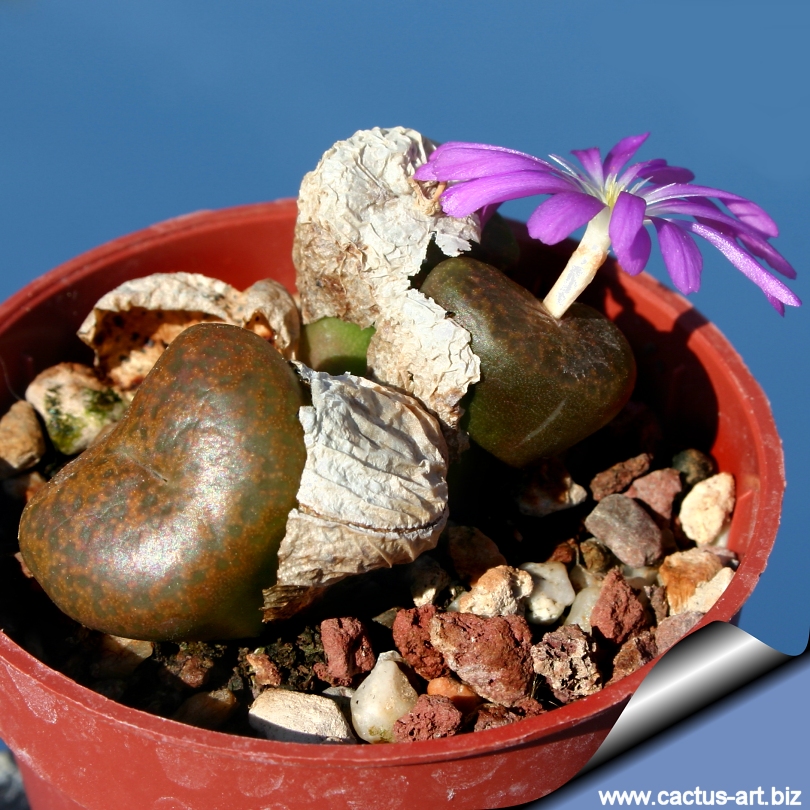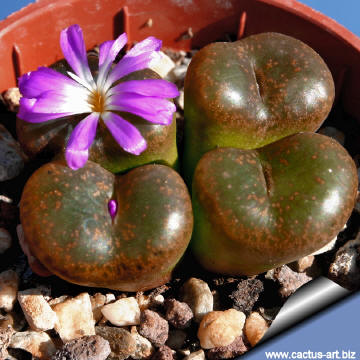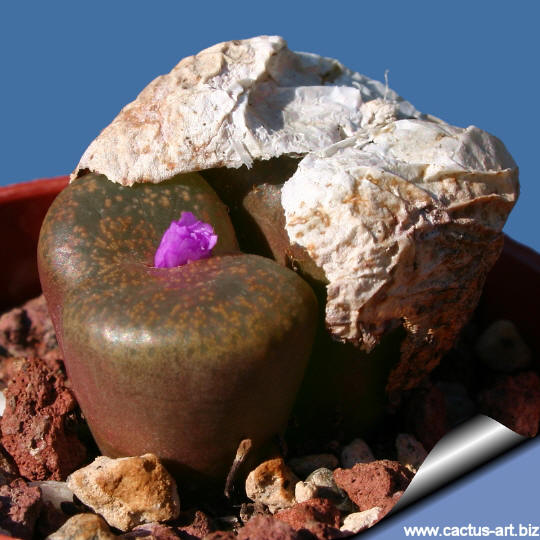|
|
|

Conophytum koubergense is a
beautiful dwarf plant with red-brown bodies and violet flowers in autum.
|
 |
Description:
Succulent rusty-red bodies similar to dwarf
Lithops with
exquisite markings, these plants are variably caespitose, with single or
double bodies, or forming small mats or cushions,
Body (Leaves): 10-30 mm in diameter and up to 12 mm tall.
Circular with
truncate apex, rusty brown, chocolate brown, ochre or
yellowish-green, eventually with pale lines with a small growing cleft
that doesn't reach right across the body. Border often paler, window
large.
Flowers: Bright pink-violet a with a white centre. The
thin petals form an almost star-like, spidery structure, they are very
showy.
Blooming season: autumn. |
|


Advertising
|
|
|
|
|
|
|
Family: Mesebrianthemaceae (Aizoaceae) |
|
Conophytum koubergense L.Bolus
Scientific name: Conophytum
lithopsoides subsp. koubergense (L.Bolus) S.A.Hammer
In: Conophytum 1993:34
Habitat: Grows on brown quartz.
Origin: South Africa. Type locality: Kouberg.
|
Synonyms:
- Conophytum
- Mesembryanthemum

|
|
|
|
Cultivation: C. koubergense is relatively easy to
grow. These plants grow on winter rain and head for
summer dormancy. More or less dormant in summer. The plant requires
little water; otherwise its epidermis breaks (resulting in unsightly
scars). Water throughout the year although minimally in summer, (only
when the plant starts shrivelling), but it will generally grow even in
summer if given water. Water regularly in winter after the previous
year's leaves have dried up. Requires good drainage. Keep cool and
shaded from hot sun in mid-summer; it needs full sun or light shade in
the other seasons. Hardy to -2°C. Ensure a very good ventilation. Avoid
to
repot frequently. This plant may stay in the same pot for many
years. Plants grown in larger containers have frequently relatively poor
flowers. It might improve when the plants are given their own, small
individual pots.
Propagation: It can be
reproduced both by cuttings and seeds. Take the cutting from a grown-up
mother plant. Each
cutting must contain one or more heads, along with
a fraction of root.
|
|